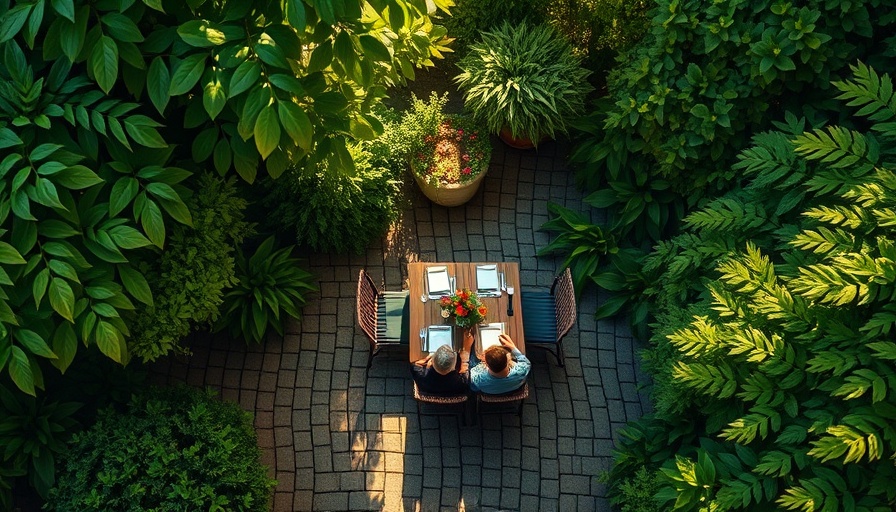
Exploring the Beauty of Mid-Century Cabins on Fire Island
Fire Island has long been a sanctuary for those seeking a blend of beach life and cultural vibrancy. Its unique character is eloquently captured in the Pines Beach Cabin, a stunning example of mid-century design that fosters community within a non-nuclear family structure. Designed by the architectural duo Noam Dvir and Daniel Rauchwerger of BOND, this 1965 stilted cabin strikes an ideal balance between personal space and shared experiences.
Architectural Design with Community in Mind
When Dvir and Rauchwerger envisioned their home, they prioritized a design that embraced their community. With guest suites openly accessible from the exterior, the cabin radiates a welcoming spirit while allowing for privacy. "We designed it for our non-nuclear family," explains Dvir. Such intentionality ensures that friends can gather without compromising individuality—a thoughtful approach that resonates deeply with homeowners valuing community.
Capturing Collective Memories Through Space
The couple’s use of design elements encourages interaction and connection. The custom queen-sized daybed in the living room is not merely an aesthetic choice; it encourages conversation among guests. Dvir notes that having a daybed instead of a traditional sofa is "wonderful to lounge on" and opens up opportunities for organic interaction. Such practical insights can inspire homeowners looking to create spaces that foster warmth and camaraderie.
Delicious Discoveries: Food and Travel Inspirations
As a Fire Island retreat, the Pines Beach Cabin offers endless opportunities for culinary delights. The area’s proximity to fresh seafood markets invites homeowners to embrace local ingredients, enriching their dining experiences. Integrating food and travel enhances the hospitality within home settings, creating loops of shared meals that strengthen community bonds.
Pine-Scented Memories: Impact of Environment on Design
With its history of smoke and humidity, the original pine ceiling reflects the island's unique atmosphere. Homeowners should acknowledge the impact of environmental factors on their home’s design. Pulling inspiration from local materials, like the original pine and the iconic fireplace, can foster a deep connection to the place and its stories. Small changes like this can elevate a home’s aesthetic while preserving its narrative history.
Learning from California's Coastal Homes
A parallel can be drawn between the Fire Island aesthetic and California’s coastal homes, where openness and light harmonize beautifully with nature. Much like the Pines Beach Cabin, California designs often embrace mid-century elements, encouraging homeowners to experiment with transparency and accessibility in their own designs. The blend of indoor and outdoor living can enhance comfort and atmospheres, providing inspiration for prospective builders and renovators.
Conclusion: Building Community Through Thoughtful Design
Ultimately, the Pines Beach Cabin stands as a testament to the power of thoughtful design in building connections. As homeowners, considering how spaces can foster interactions should be at the forefront of renovations or new projects. The intimate relationship between architecture and community is clear here—a principle that should inspire us all.
Ready to embark on creating your space that nurtures community connections? Whether it’s through architectural design, inviting interiors, or culinary experiences, there's much to explore. Take your first steps towards transforming your home into a gathering spot that nurtures relationships and shared memories.
 Add Row
Add Row  Add
Add 




 Add Row
Add Row  Add
Add 

Write A Comment